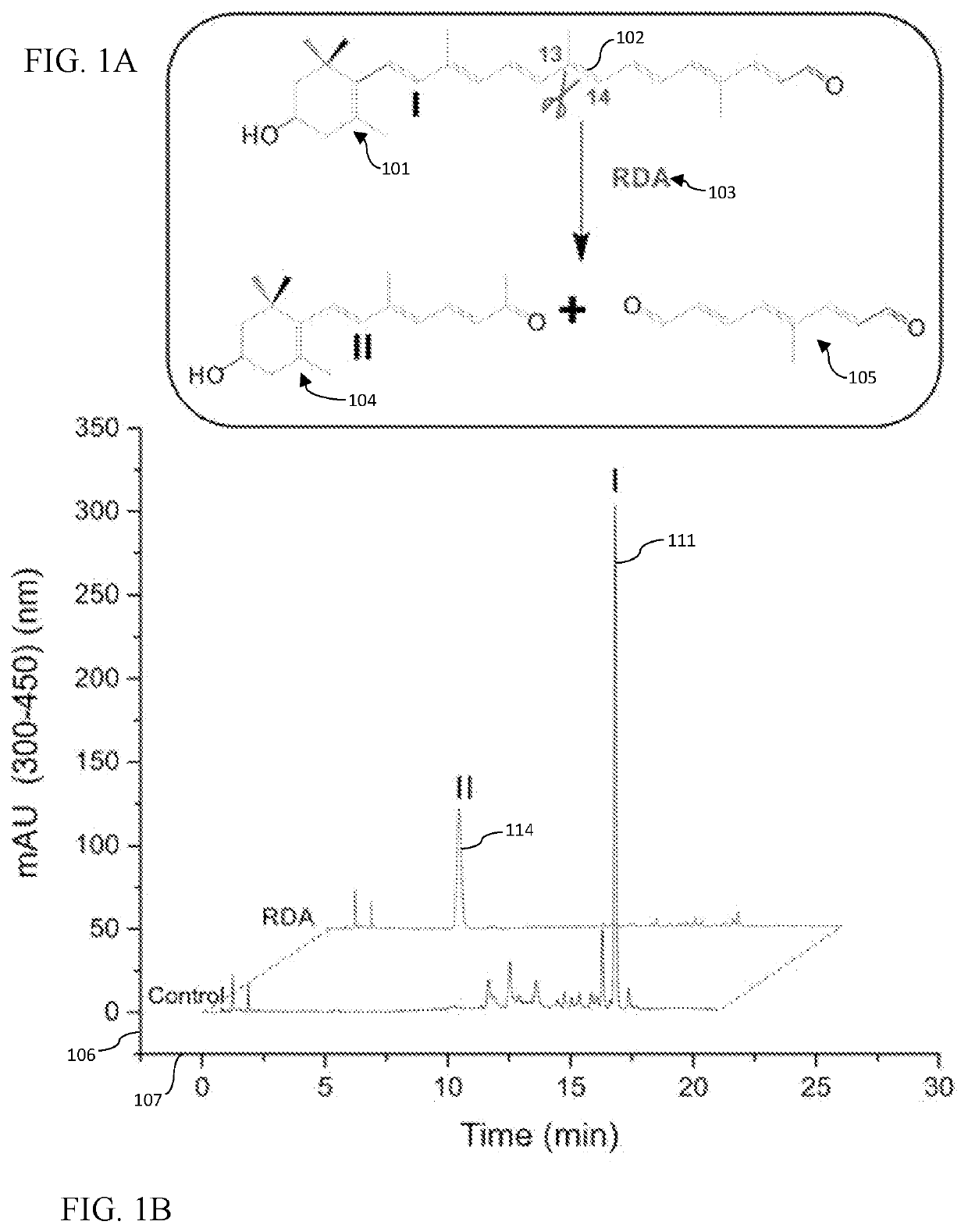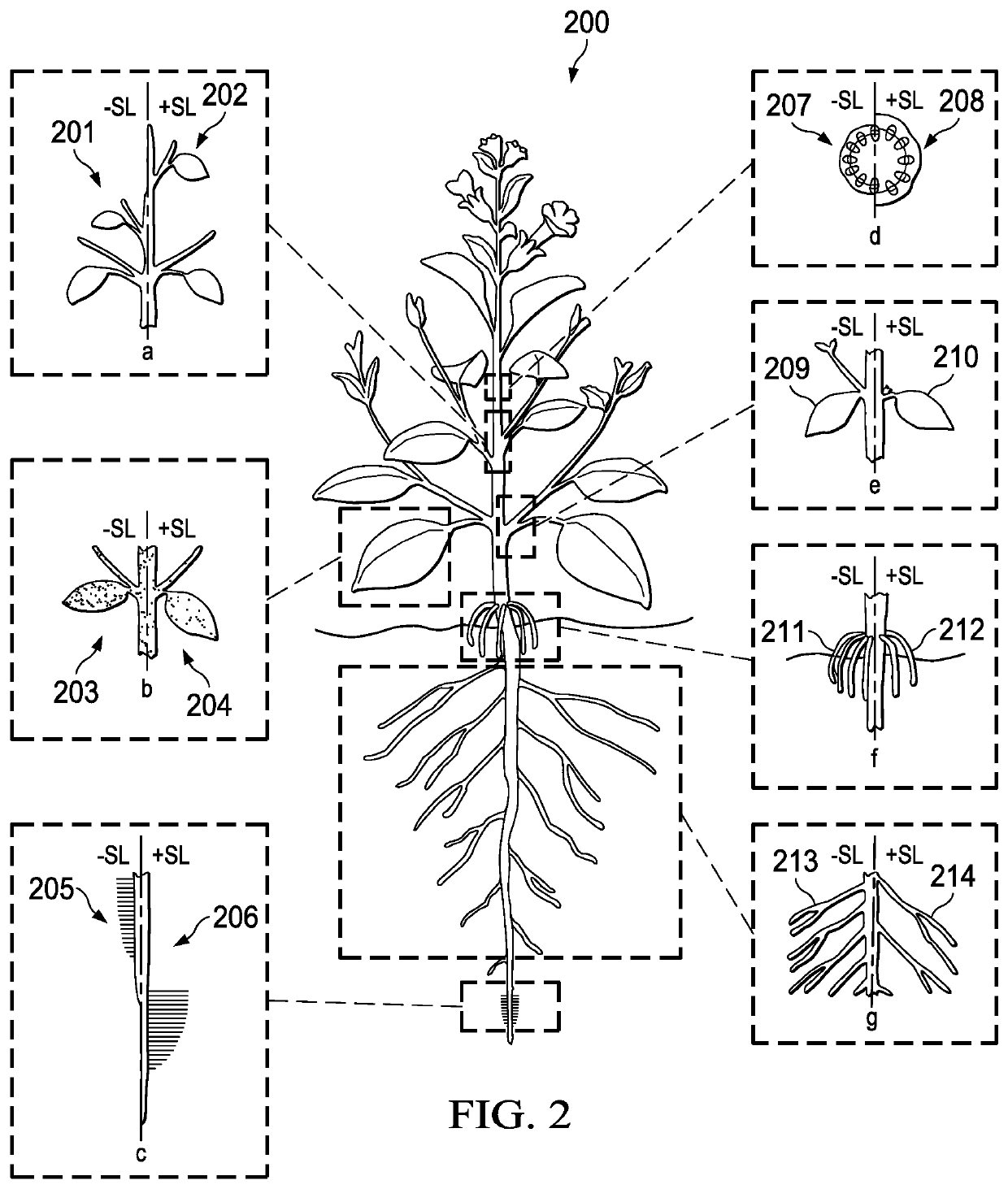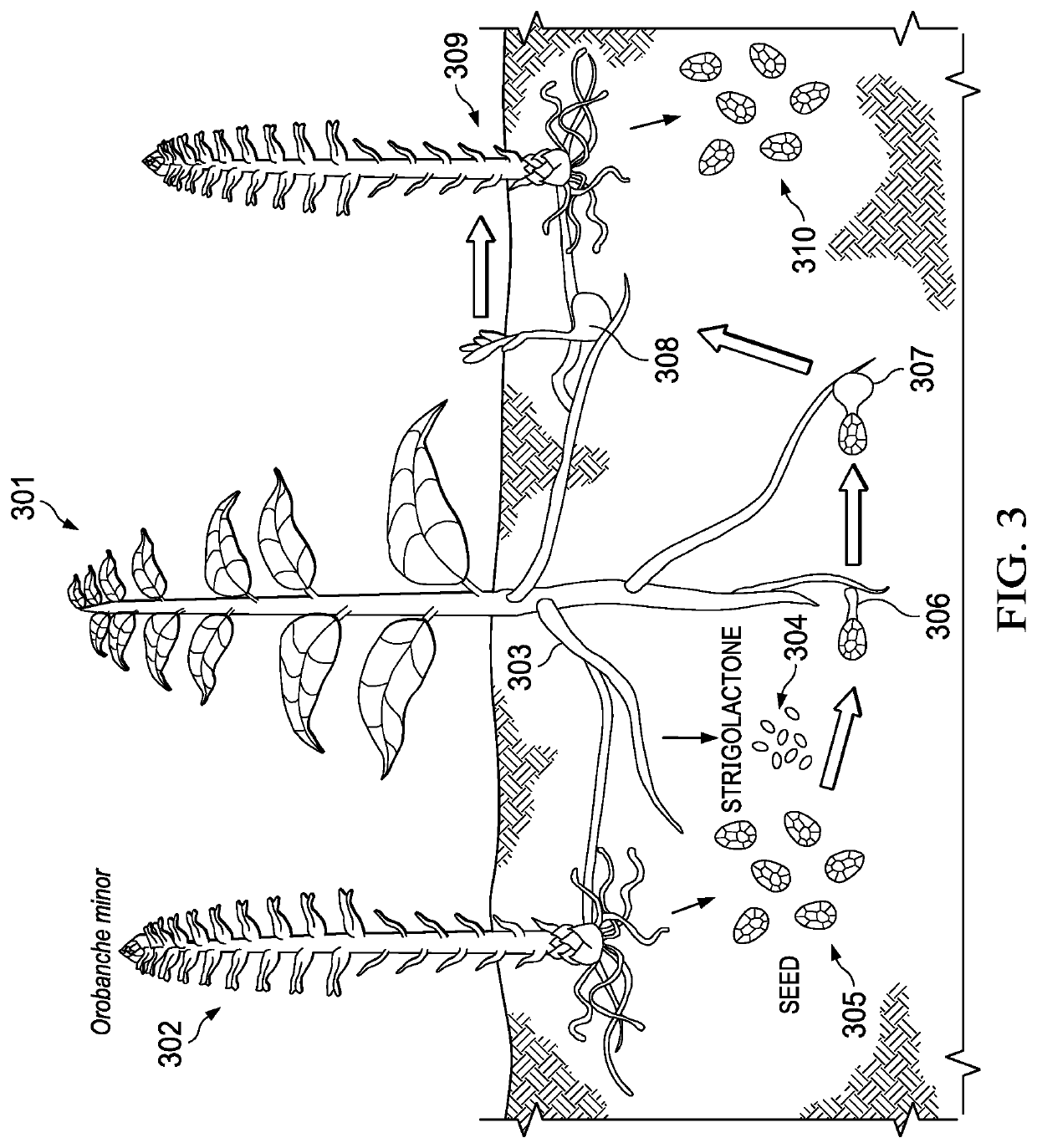Plant growth promoter with strigolactones regulation activities
a technology strigolactone, which is applied in the field of plant growth promoter with strigolactones regulation activities, can solve the problems of most damaging parasites, significant economic loss, significant damage to the host, etc., and achieve the effects of reducing biosynthesis and release, and reducing the release of strigolactone plant hormones
- Summary
- Abstract
- Description
- Claims
- Application Information
AI Technical Summary
Benefits of technology
Problems solved by technology
Method used
Image
Examples
example 1
Zaxinone on SL Levels in Rice Plant Roots at the Transcript Level
[0144]The elevated transcript levels in the Oszs mutant (zas mutant) were found to be significantly reduced by the application of zaxinone (3-OH-β-apo-13-carotenone). Application of zaxinone also led to a reduction in the transcript levels of these SL genes in the wild type.
[0145]FIGS. 13A-D are bar graphs demonstrating the effect of zaxinone on SL levels in rice plant roots at the transcript level. 14-day-old rice seedlings were transferred to new hydroponic pots containing fresh media with or without chemicals for 6 hours. SL biosynthetic (D27, D10, D17 and MAX1-Os900) gene expression were determined under −Pi conditions (phosphate deficient) with zaxinone (2.5 and 5 μM) treatment of both Nipponbare wild-type (WT) rice roots and zas mutant rice roots. The expression levels (1301) were detected by quantitative RT-PCR. Ubiquitin was used as a reference gene. Mock treatment (control) treatment consisted of 0.1% acetone....
example 2
ion of ZAS Activity in Planta
[0151]To confirm the ZAS (zaxinone synthase) activity in planta and explore the biological function of zaxinone, a retrotransposon Tos17-insertion mutant (NC0507) with an insertion in the tenth ZAS exon was characterized (FIG. 5A). Zaxinone was quantified in roots and shoots of the zas mutant under normal conditions and upon phosphate deficiency that causes a considerable increase in ZAS transcript levels (FIGS. 14A-C). Under normal conditions, zas roots contained significantly less zaxinone than wild-type roots (12 versus 27 pgmg−1 dry weight). This difference increased under phosphate-deficient conditions (6 versus 16 pgmg−1 dry weight; FIG. 7D).
[0152]In contrast, zas and wild-type shoots showed similar zaxinone contents regardless of phosphorus supply. The ZAS substrate apo-10′-zeaxanthinal was quantified in wild-type and zas seedlings. Consistent with lower zaxinone amounts, roots of phosphate starved zas seedlings contained more apo-10′-zeaxanthinal...
example 3
Epi-5DS (5-Deoxystrigol) in Root Exudates and Roots
[0154]The zas mutant rice showed increased SL content in both root tissues and root exudates and the elevated SL levels in the exudates resulted in an increase in germination activity of root parasitic weed seeds. SL levels in root exudates and roots of WT rice and zas mutant rice with and without zaxinone treatment were measured to determine the extent of the SL decrease attributable to the zaxinone, and also to determine whether the decrease in SL release led to an overall decrease in germination of root parasitic weed seeds. The rice seedling were maintained in a manner similar to the protocol in FIG. 13.
[0155]The levels of epi-5DS (5-deoxystrigol) in root exudates (FIG. 15A) and roots (FIG. 15B) for WT and zas mutant rice under −Pi conditions (phosphate deficient) with zaxinone (5 μM) treatment were determined by LC-MS / MS. The bar graph shows pg / mg of epi-5DS (1501) for each comparison bar (1502). Mock (control) treatment consis...
PUM
 Login to View More
Login to View More Abstract
Description
Claims
Application Information
 Login to View More
Login to View More - R&D
- Intellectual Property
- Life Sciences
- Materials
- Tech Scout
- Unparalleled Data Quality
- Higher Quality Content
- 60% Fewer Hallucinations
Browse by: Latest US Patents, China's latest patents, Technical Efficacy Thesaurus, Application Domain, Technology Topic, Popular Technical Reports.
© 2025 PatSnap. All rights reserved.Legal|Privacy policy|Modern Slavery Act Transparency Statement|Sitemap|About US| Contact US: help@patsnap.com



